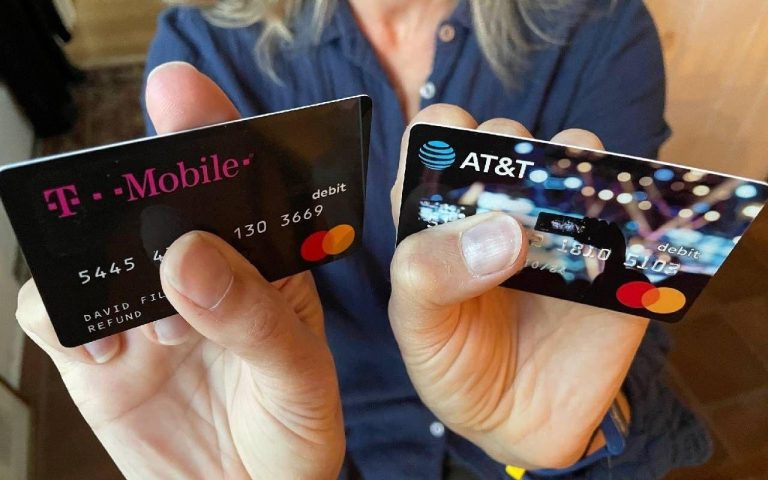By Ashley Milne-Tyte, Next Avenue
It’s happened twice in the last 18 months. After canceling accounts with a cable provider and a cellphone company, each said I would receive a partial refund. Having battled through multiple menus to reach a human being to cancel with, I hung up feeling satisfied. I had tied up my loose ends and expected the money to come back to my credit card or arrive via check.
So when I received a refund debit card from the cable company, I sighed, but vowed to use it. Little did I know how hard that would be.
These refund cards are loaded with the amount the company owes you, in my case around $25. In theory, they are useable anywhere Mastercard or Visa are accepted. But unlike a more passive refund, this type requires you to work for it. First you have to activate the card. Then the fun begins.
The Case of the Elusive Refund
I thought I’d spend the 25 bucks on lunch and a couple of coffees. But at the first coffee shop, an angry beep sounded from the store terminal, whether I tapped or inserted the card the way I use all other cards. Frustrated, I gave up and whipped out my regular bank card.
The same thing happened a couple of days later at another store. And again, at another. It was starting to feel like my former cable company didn’t want to give me my money back.
Customer experience consultant and author Amas Tenumah says I’m onto something.
He says there are a couple of good reasons why many companies now issue refunds via debit card. First, it’s less of an administrative headache — for them. Issuing refunds, he says, “is a laborious process and can be expensive,” so instead businesses are increasingly outsourcing that job to someone else. And here’s where it gets interesting.
Here’s How It Works
Tenumah, who has helped clients outsource their refunds in the past, describes how it works: a financial services company approaches, for example, a cable company and bids to take those refunds off its hands. He says if the cable company owes customers a total of $1,000 in refunds, the middleman will offer the company $900 or less and promise that every customer who wants their refund will get it.
“It’s a playbook that was taken from the collections companies,” he says. A middleman issues the refund card to the customer, under the cable company’s name. The cable company saves money up front by not having to pay its employees to do the work and passes on the risk of lost or stolen cards to the middleman.
Tenumah says middlemen are betting many of us will never use that card, and they’re right. We’ll let it sit on a dresser gathering dust. Then it expires. Or we’ll get some, but not all, the value off the card, as I eventually did by using my two cards on a bakery’s website. Whatever we don’t spend, the middleman pockets.
As I discovered, these refund cards “have all these things that make it so that this is your least-convenient mode of payment, even if you activate it,” says Tenumah. “You put all this together and it’s a pretty good bet they’re going to make a good profit.”
According to the most recent data from Bankrate.com, 43% of Americans have at least one unused gift card lying around, which gives you some idea of why refund cards are a business worth pursuing.
An Anti-Consumer Practice?
Chuck Bell is program director for advocacy at Consumer Reports. He describes refund cards as an “anti-consumer sharp business activity that hurts people.” Not everyone has the digital savvy to activate the card, or to jump through the hoops required to re-activate it if it expires.
Adding to the absurdity, once it does expire the card may start charging you a monthly “maintenance fee” for the privilege of keeping it going. And while each card has a customer service number on the back, good luck getting a human on the line.
“It’s unfair to the customer and particularly the vulnerable customers who don’t have the time to fight these practices,” Bell says.
But businesses themselves have a different view. T-Mobile, which sent my husband a refund debit card, responded to my queries with a statement. A spokesperson wrote that customers could tell the company at the time of cancelation how they would like to be refunded.
There Is an Alternative . . .
In the event that a refund debit card is issued, the spokesperson continued, it’s to the customer’s benefit: “Checks often have a high rate of return [because the Postal Service cannot read or find the address] and original payment details frequently change, so this is the best way to ensure customers get their refund quickly and efficiently.”
But how efficiently you get it can vary. The letter from T-Mobile stated that my husband could request a check or transfer the balance on the card to his bank account. He opted for the latter. That meant squinting at the teeny-tiny writing on the back of the card, tapping in a long web address, setting up an online account, coming up with a password, dealing with dual-factor authentication messages and typing in all his bank details before the screen declared, “Success!”
When I peered closely at our family’s collection of refund cards, I saw the words “administered by North Lane Technologies, an Onbe company” on the back. On its website, Onbe, located in Conshohocken, Pennsylvania, describes itself as “helping you deliver on-demand payment experiences to your customers and workforce without the cost, risk and complexity of orchestrating payments in-house.”
In a statement, an Onbe spokesperson didn’t address my question about why neither of my refund cards worked in stores. He wrote, “The card is accepted anywhere that Mastercard cards are accepted.”
Except when it’s not.
Use It or Lose It
Tenumah says I hit a roadblock because many card processors view this type of pre-loaded card as a fraud risk.
“Therefore [these cards] have low trust at many credit card processors. Some processors ban them outright,” he says. Which could explain the admonitory beeps that erupted from store terminals whenever I tried to check out.
Bell says when customers struggle to use a refund card or find they’re being charged a fee for it, they should complain to the state attorney general’s office, or the Consumer Financial Protection Bureau.
Transfer the Full Amount ASAP
“This seems like [a practice] that could be stamped out if you form a critical body of awareness about it and you rally the community of public opinion,” he says.
In the meantime, Tenumah says your best bet is to get your money off that card as soon as possible. When he received his most recent refund card, he says, “I just loaded it all onto my Starbucks card,” tapping the 16 digits of the card into his Starbucks account, topping it up. It worked.
“Find one place that takes it that you do business with, and load it all that way,” he says.
Otherwise, that refund won’t be going back into your pocket. It’ll be enriching someone else.
Read the full article here








